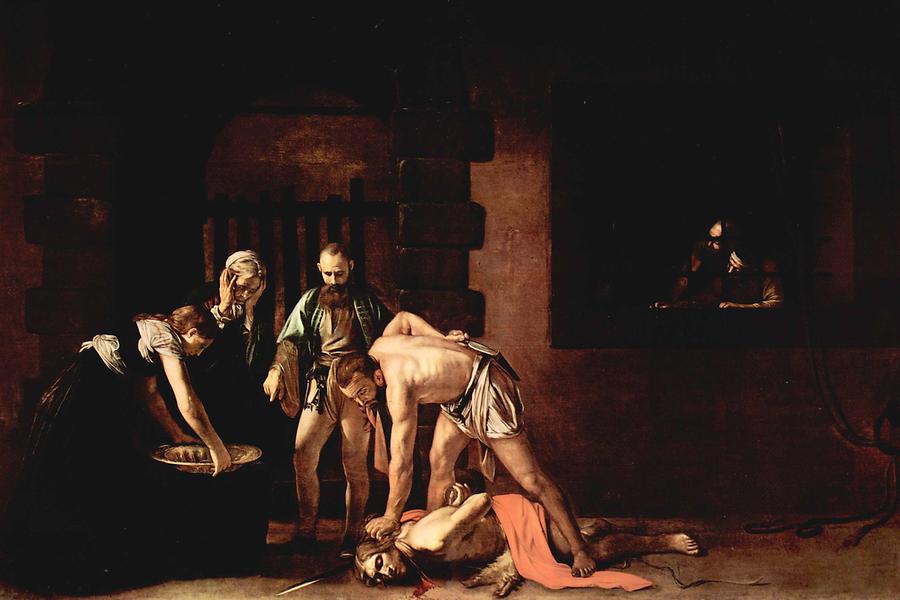'The Beheading of Saint John the Baptist'#

'The Beheading of Saint John the Baptist', © Gerhard Huber, under CC BY-NC 4.0 +Edu
In the oratory hangs a masterpiece of Italian painting. The 'Beheading of Saint John the Baptist' by Caravaggio amazes with a painting style that was almost realistic by the standards of that time. With strong contrasts of light and shadow, Caravaggio succeeded in dramatically elaborating the representations as snap-shots of an event. Such a manner of representation of religious scenes was shocking for his epoch, for people expected to see idealized figures in sacred paintings. But the rebel even went one step further: The beheading has not succeeded with the first sword thrust and the executioner is completing his work with a knife. Salome eagerly passes the tablet which is to take the head of the Baptist, while the jailer unemotionally orders the execution. Of all things, Caravaggio affixes his signature into the pool of blood flowing from the victim's throat.
Im Oratorium des Gotteshauses hängt ein Meisterwerk der italienischen Malerei. Die „Enthauptung Johannes des Täufers“ von Caravaggio verblüfft mit einem für damalige Zeiten unerhört realitätsnahen Malstil. Mit starken Kontrasten aus Licht und Schatten gelang es Caravaggio, die Darstellungen als Momentaufnahmen eines Geschehens ungemein zu dramatisieren. Eine derartige Wiedergabe von religiösen Szenen war für seine Epoche schockierend, denn von sakraler Malerei erwartete man idealisierte Gestalten. Doch der Rebell setzte noch einen drauf: Die Enthauptung ist mit dem ersten Schwerthieb noch nicht gelungen und der Henker macht sich daran, sein Werk mit dem Messer zu vollenden. Eifrig reicht Salome das Tablett, das das Haupt des Täufers aufnehmen soll, während der Kerkermeister unbeteiligt die Vollstreckung anordnet. Ausgerechnet in die Blutlache, die aus dem Hals des Opfers strömt, setzte Caravaggio seine Signatur.